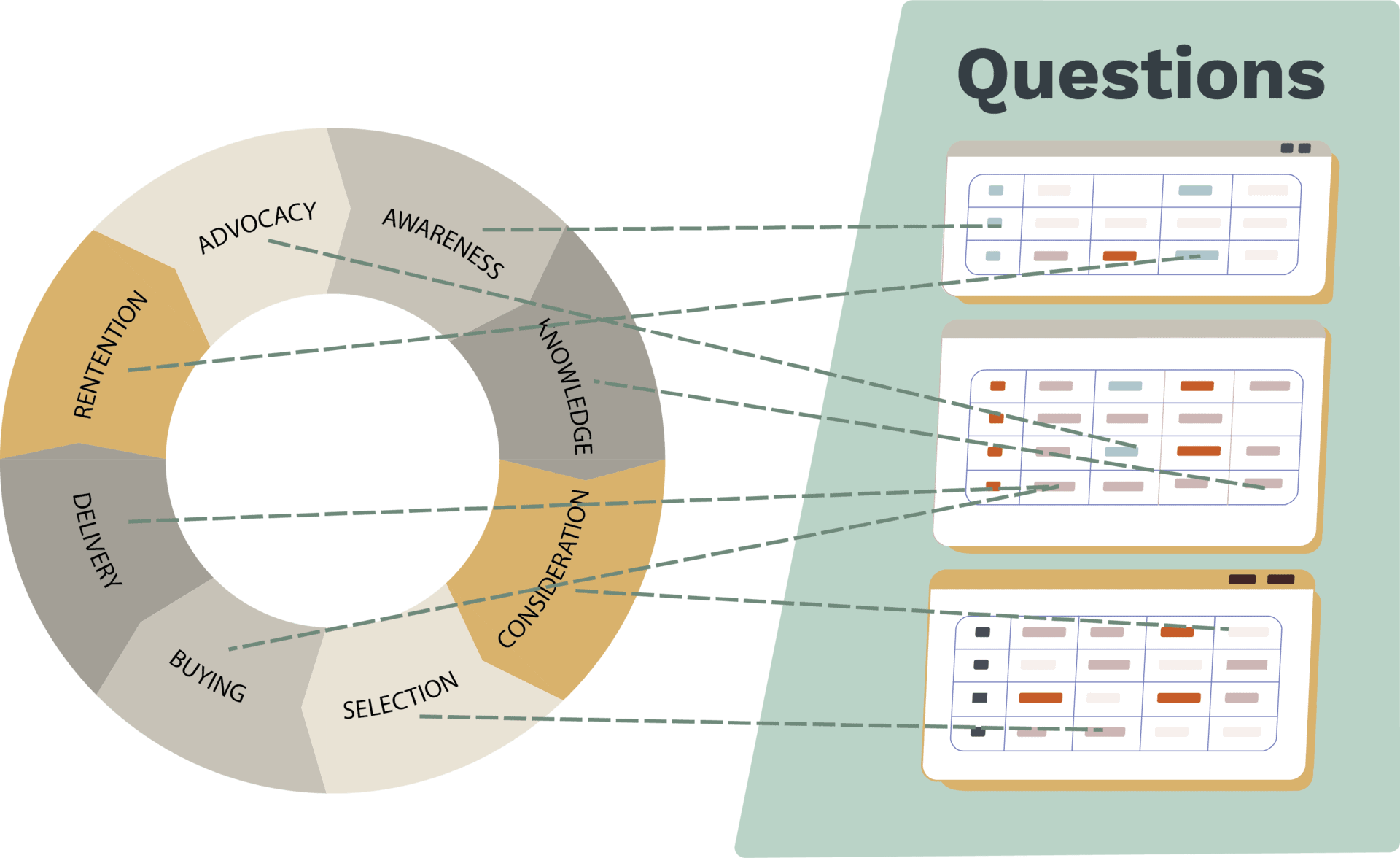NB The article is originally produced in Danish
It is not difficult to send an NPS measurement in an email to a customer. But one thing is to collect answers, quite another is to optimize the way you measure so that the Net Promoter Score creates value for both company, customer and employee.
Avoid fruit salad in your measurements
NPS works best when not mixed unnecessarily with long questionnaires. Ask one question with the option of a comment. By leaving the measurement alone, you strengthen your response rate, and you can better adapt the channel you measure through to the individual customer. At the same time, it will be easier to follow up on the answers and create a “closed loop” process between contact point, answer and follow-up.

Pro tip: The strength of each question is that it is answered in real time. Rather than asking a series of questions long time after the point of contact, ask the customer when the experience is completely fresh in the memory.
Relation or transaction
The relationship (rNPS) is the customer’s overall view of the company. The transaction (tNPS) is the relationship to the product or service in the individual contact point. If you want to measure rNPS, the question should not be asked in direct connection with a specific contact point, as the experience in the given contact point will affect the measurement. Conversely, do not ask for a specific experience or service long after the event.
However, you can easily use NPS to measure both by simply angling the question to suit the purpose. For example, you can replace a CSAT and “Customer Effort Score” question with a transaction NPS to measure tNPS:
“How likely are you to recommend our company to a friend or colleague?”
“To what extent does the newsletter provide relevant content for you?”
Pro tip: Divide your customers and ask them questions more than once a year instead of measuring the relationship for all customers once a year. The division makes it easier to handle the quantity, and the continuous measurement means that the situation around the time does not muddy the measurement.
Systematics in the measurements
It is absolutely essential for an operational program that there is systematics in your measurements. Decide where it is most important to invest first, and create a structure that partly ensures you an overview, and which is also realistic. Next, all measurements must have an owner who is responsible for the individual contact point. In this way, you anchor the measurement in the organization.
Choose the right channel for the purpose
The choice of channel for the measurement should be made on the customer’s terms. It must be the channel that is most relevant in relation to the transaction and that makes it as easy as possible for the recipient to submit his answer. If, for example, the marketing department wants input for the company’s newsletter, it is obvious to merge the question into that channel. If customer service has had an e-mail correspondence, you should incorporate the question via e-mail. Conversely, it makes better sense to send an SMS if the customer has called in.
Pro tip: It increases the response rate significantly if you consider the customer’s premises in your choice of channels.
Follow up on your customers' answers
Most have tried to give feedback to a company and then be greeted with noisy silence. This makes the customer less likely to respond next time. By following up on customers’ comments, you show that you take them seriously.
At nps.today, we see the highest response rates among the customers who follow up on their customers’ feedback. It creates dialogue between customer and company, which the company can use to strengthen the customer relationship, create better products or better experiences.
Pro tip: Create systematics in how you follow up on customer responses. By combining NPS with, for example, revenue, you can create a safety net under your company so that the most important customers do not disappear due to lack of follow-up.
Report NPS to employees
When starting up NPS, it is important to notify everyone in the company. Employees must understand that it is a concrete tool for improvements in their daily lives. In addition, the use of NPS must create an increased customer focus across the organization, and therefore all employees must be made aware of what NPS is all about.
Pro tip: If you use Slack or Teams in the organization, these systems are ideal for making NPS visible to employees, as they still have their daily walk here. Alternatively, you can create virtual dashboards, which can be displayed on screens in the individual departments.
